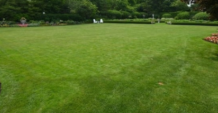I remember my mom and grandma used to can the beets that we grew in the garden. Always tasty! Beets can be grown as a spring or fall crop in Kansas. Commonly grown for the roots, the tops can also be used as a cooked green.
Variety considerations. Red, round beets are by far the most common, but you can now easily find gold, white, red and white striped, and cylindrical types as well. Some non-red varieties are not as vigorous and have lower germination rates. Monogerm varieties only grow one plant per seed, whereas most varieties will produce 2 to 6 plants per seed. Look for varieties that mature quickly and produce uniform roots..
When to plant. Beets are fairly frost hardy and can be planted from late March to mid-April in many areas of Kansas. Irrigate carefully to avoid soil crusting, which prevents good germination. Plant fall beets in late July to early August.
Spacing. The beet “seed” is actually a cluster of seeds in a dried fruit, resulting in 2 to 6 plants per seed. Plant the seeds about an inch apart and about ½ inch deep. Hand thinning is usually necessary to provide a uniform stand of beets properly spaced 2 to 3 inches apart. Poorly thinned stands will have an abundance of tops with few or small roots.
Care. Beets compete poorly with weeds, so frequent shallow cultivations are necessary. Beet plants require a fertile well-watered location. Hand thin the plants when they are 1 to 2 inches tall to avoid damage to surrounding plants.
Harvesting. Select beets of the diameter you prefer. Roots larger than 2 to 2½ inches in diameter are often tough and woody. Beets for baby beets or whole canning should be harvested smaller. Trim the tops of beets to ½ to 1 inch above the roots and store in plastic bags in a refrigerator before use. Mulch fall planted beets to prolong the fresh harvest season but use them before they freeze.





